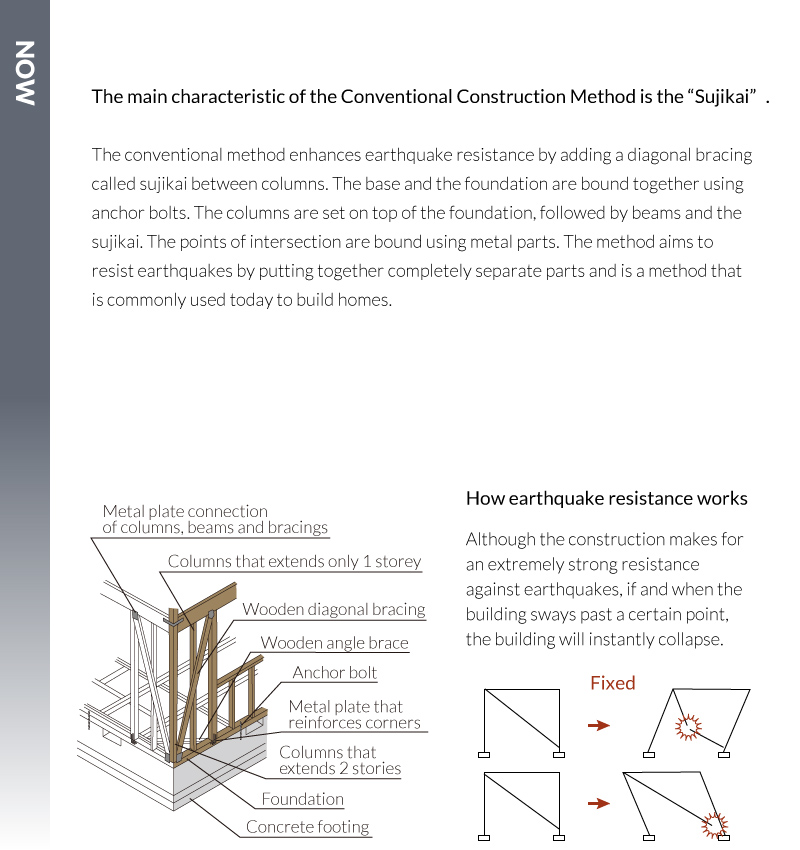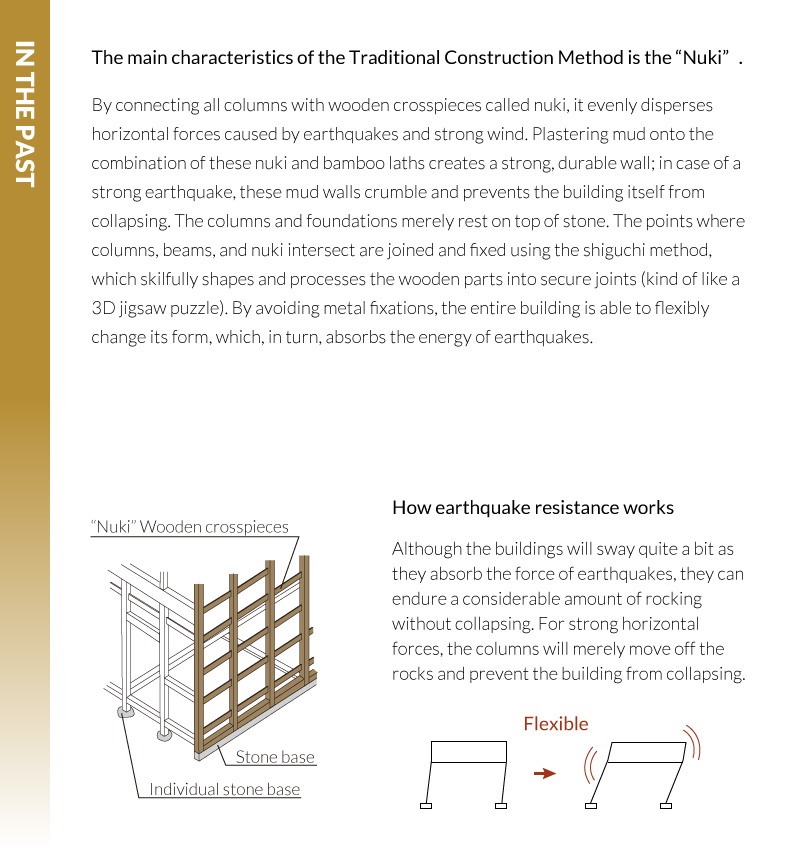Considerations
Important matters you should be aware of
before purchase Kyo-machiya.
Traditional Construction Method and Earthquake Resistance
Currently in Japan, the Building Standard Act regulates construction of all buildings, laying basic rules and standards for the building site, its structure, equipment and facilities, and intended use. The law was put into effect in the year 1950 in response to the rapid economic growth and the rising demand for homes after WWII.
The Building Standard Act categorizes pre-1950 construction methods as “traditional” and all post-1950 wooden construction methods as “conventional”, and Kyo-machiya falls under the former category.
Please see below for the characteristics of each construction method.


The High Craftsmanship required for the Traditional Construction Method
The traditional construction method is the result of more than a thousand years of past carpenters passing down their efforts and building on each other’s ideas to protect people from earthquakes. It is grounded on the concept of, not fighting and resisting, but rather unifying and coexisting with the forces of nature by understanding and taking advantage of wood and understanding its characteristics.
With that said, however, because we lacked the technology and the resources to study the structure of the traditional method in the past, we currently still lack scientific evidence and data that supports its strength and credibility. It is only recently that it has become possible to use computer analysis for this purpose, making more sophisticated experiments possible. From this, the traditional construction method is finally starting to be evaluated fairly, and the building standards of Japanese mud walls are being reviewed for revision. The standards for the traditional method has always been ambiguous from the beginning, and there has always been criticism on the matter, claiming the government should put more emphasis in research to set proper, more accurate standards.
The conventional method was the result of the Japanese government taking action to promote reasonable mass production of houses and buildings. This was during a time in which the country was striving to succeed in postwar rehabilitation after losing a significant amount of skilled carpenters and craftsmen to war. The Government Housing Loan Corporation also adopted the standards and used as conditions when giving out home loans. Improvements were made on the conventional method after the country experienced a number of major earthquakes post-1950, and the current method is guaranteed to withstand a level 6 on the JMA Seismic Intensity Scale.
The traditional method, which has been deemed "nonconforming to modern standards", is required to pass individual safety tests and make a special application for approval. Thus, the high craftsmanship – the fruition of wisdom and skills passed down for centuries – is now in danger of becoming a dying art. Although the Building Standard Law was created to set and guarantee the necessary level of safety, by regarding the traditional construction method as dangerous, it resulted in forcing the use of basic, lower level skills on highly skilled carpenters and craftsmen.
Structural Reinforcement Meister
We at Hachise strive to foster an environment of learning to allow each and every employee to learn and become specialists on reinforcement technology. In order to preserve Kyo-machiya for the future, we have adopted a system in helping our employees to become a structural reinforcement administrator; those who qualify are given the title "Structural Reinforcement Meister". Whenever the slightest reinforcement or change is made to any part of a Hachise property, a "Structural Reinforcement Meister" is put in charge to be present throughout the procedure from planning to completion, checking, giving orders, and ensuring safety and making sure that all aspects of the project conform to the laws and standards applicable.